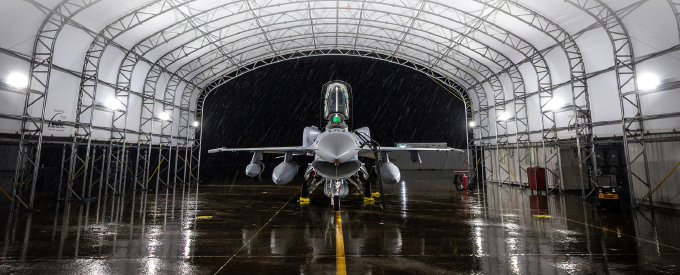2024-04-04
First F-16 Block 70 Voyage Signals Bahrain’s Vision
Lockheed Martin recently celebrated a significant achievement as the inaugural ferry cell of three F-16 Block 70 jets departed from Greenville, South Carolina, destined for Bahrain.
This occasion underscores Bahrain’s pioneering role as the first Gulf Cooperation Council member to both operate the F-16 and integrate the advanced F-16 Block 70 variant into its air fleet.
Presently, Lockheed Martin has rolled out five F-16 Block 70 jets for Bahrain, while an additional 11 are undergoing various stages of production and testing.
The initial aircraft are currently engaged in flight test missions at Edwards Air Force Base, California, under the supervision of the 416th Flight Test Squadron.
OJ Sanchez, vice president and general manager of the Integrated Fighter Group at Lockheed Martin, emphasised the importance of the F-16 in the joint 21st Century Security battlespace. “With the introduction of the F-16 Block 70, we are witnessing a significant leap in fighter capabilities. The integration of this proven platform will allow the Royal Bahraini Air Force to safeguard its skies effectively and partner with allies worldwide,” said Sanchez.
According to him, more than 3,100 F-16s are operational in 25 countries, demonstrating the F-16’s reputation as a reliable and versatile fighter.
Sanchez also highlighted the enduring partnership between the U.S. government, Bahrain, and Lockheed Martin, a relationship that reflects shared values in defence, economic growth, and cultural ties.
Lockheed Martin’s dedication to regional security in the Middle East stretches back over 50 years. This commitment recently took flight with the historic delivery of the first F-16 Block 70 fighter jet to Bahrain.
The Block 70 programme itself boasts a robust backlog of 133 aircraft for six countries, with Lockheed Martin anticipating deliveries of 19-21 jets this year alone.
The potential for up to 300 additional jets globally further underscores the programme’s significance.
Cutting-Edge Block 70/72
The Block 70/72 features advanced avionics, a proven Active Electronically Scanned Array (AESA) radar, a modernised cockpit with new safety features, advanced weapons, conformal fuel tanks, an improved performance engine, and an industry-leading extended structural service life of 12,000 hours.
Operational capabilities are significantly bolstered by an array of advanced features, including an advanced datalink, targeting pod, and weapons systems, as well as Infrared Search and Track (IRST) capabilities.
Moreover, precision Global Positioning System (GPS) navigation and an advanced Common Digital Flight Control Computer, coupled with an enhanced Autopilot/Auto Throttle system featuring the life-saving Automatic Ground Collision Avoidance System (Auto GCAS), further augment the aircraft’s capabilities.
A key safety feature, the Automatic Ground Collision Avoidance System (Auto GCAS), presented in late 2014, has been instrumental in saving the lives of 13 pilots across 12 jets.
Radar Evolution
The advanced APG-83 AESA radar introduces enhanced situational awareness, flexibility, and faster all-weather targeting capabilities to the F-16s. Leveraging hardware and software commonality with the AESA radars found in F-22 and F-35 aircraft, the APG-83 provides F-16s with 5th Generation fighter radar capabilities.
Additionally, it is being seamlessly integrated with a state-of-the-art active and passive internal electronic warfare system known as Viper Shield. This integration includes a new fully Digital Radar Warning Receiver (DRWR) specifically designed to interface with the APG-83 radar, enhancing the aircraft’s defensive capabilities.
The Block 70/72 features a new Centre Pedestal Display (CPD), which provides critical tactical imagery to pilots on a high-resolution 6”x 8” screen. The high-resolution display allows pilots to take full advantage of AESA and targeting pod data.
The new CPD enables colour moving maps, larger and easier to manage air-to-air Situation Displays, zoom functionality with the ability to switch information among displays, and a digital display of Flight Instrument Data.
Newly produced aircraft, equipped with structural and capability upgrades, guarantee that the international F-16 fleet remains operational well into 2060 and beyond.


No Comments